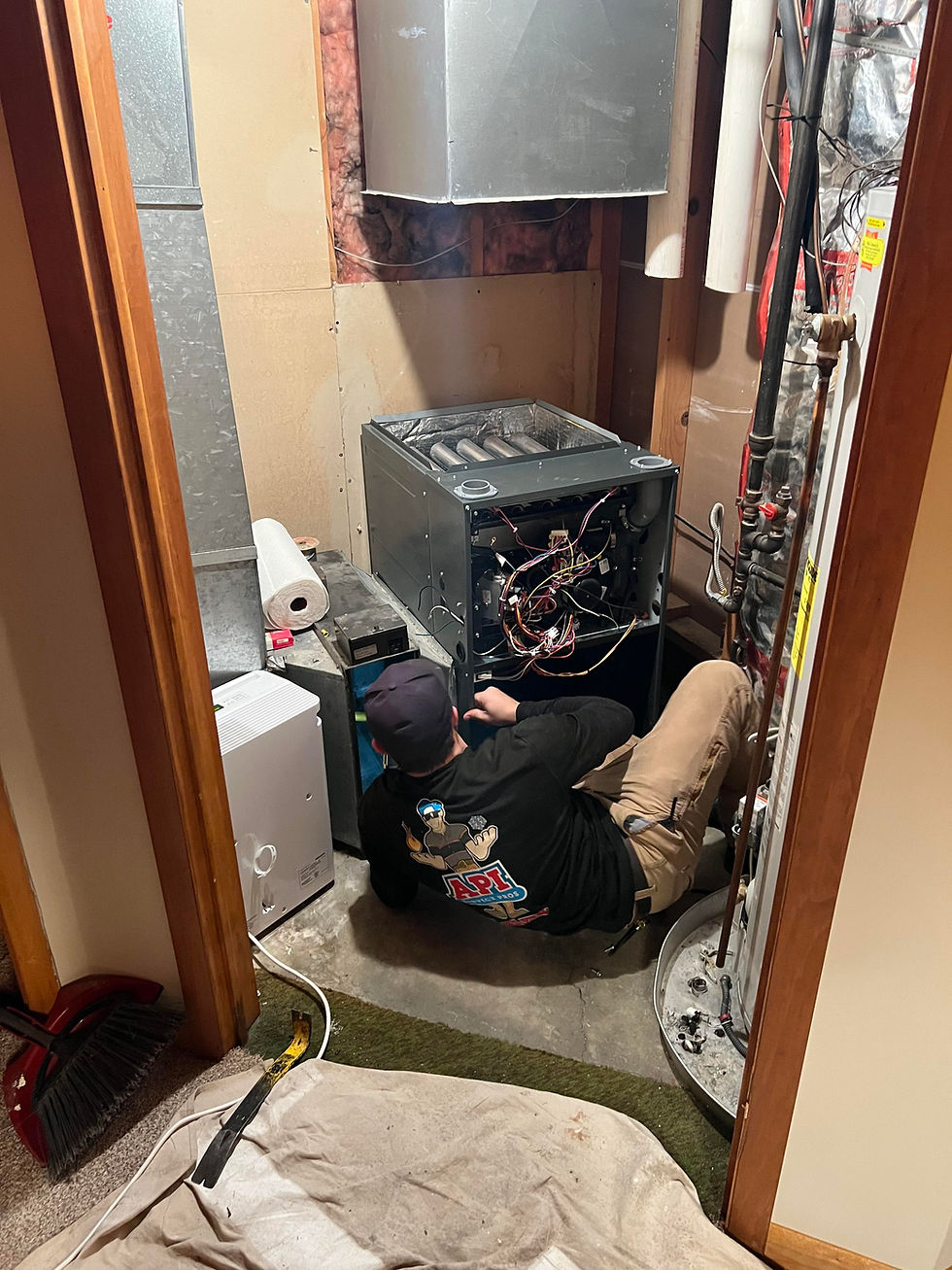Unlocking the Mystery of Reversing Valve Restrictions in Your HVAC Unit
- API Service Pros

- Jan 31, 2024
- 2 min read
Your HVAC system is a complex orchestra of components working together to maintain a comfortable environment in your home. The reversing valve plays a crucial role in this symphony by facilitating the transition between heating and cooling modes. However, when restrictions arise in this vital component, it can lead to performance issues. In this blog post, we'll delve into the causes, symptoms, and solutions for reversing valve restrictions in your HVAC unit.

Understanding the Reversing Valve:
The reversing valve is responsible for directing the flow of refrigerant in your HVAC system, determining whether it operates in heating or cooling mode. When restrictions occur within this valve, it hinders the seamless flow of refrigerant, affecting the overall efficiency of your unit.
Common Causes of Reversing Valve Restrictions:
1. Contaminants in the Refrigerant:
Over time, contaminants like debris, dirt, or moisture can infiltrate the refrigerant, causing build-ups and restrictions within the reversing valve.
2. Refrigerant Leakage:
A refrigerant leak can compromise the pressure levels within the reversing valve, leading to restrictions and hindering its ability to switch modes effectively.
3. Manufacturing Defects:
In some cases, manufacturing defects or wear and tear can contribute to restrictions in the reversing valve, impacting its overall functionality.
Symptoms of Reversing Valve Restrictions:
1. Inconsistent Heating or Cooling:
If you notice irregularities in maintaining the desired temperature, it could indicate restrictions within the reversing valve.
2. Unusual Sounds during Mode Changes:
Noisy operations, especially during mode transitions, may suggest restrictions or potential issues with the reversing valve.
3. Reduced System Efficiency:
Restrictions in the reversing valve can result in decreased overall efficiency, leading to higher energy bills and diminished performance.
What to Do:
1. Professional Inspection:
At the first sign of issues, consult with HVAC professionals for a thorough inspection. They can identify the cause of the restrictions and recommend appropriate solutions.
2. Refrigerant Level Check:
Regularly check and maintain the proper refrigerant levels to prevent contaminants and ensure the smooth operation of the reversing valve.
3. Scheduled Maintenance:
Incorporate routine maintenance into your HVAC care plan. Professional maintenance can help detect and address potential problems before they escalate.
A smoothly operating reversing valve is essential for the efficient performance of your HVAC system. By understanding the causes, recognizing symptoms, and taking proactive measures, you can ensure that your HVAC unit continues to provide comfort and reliability. Don't let reversing valve restrictions disrupt the harmony of your home's climate control – stay vigilant and keep your HVAC system in tune!





